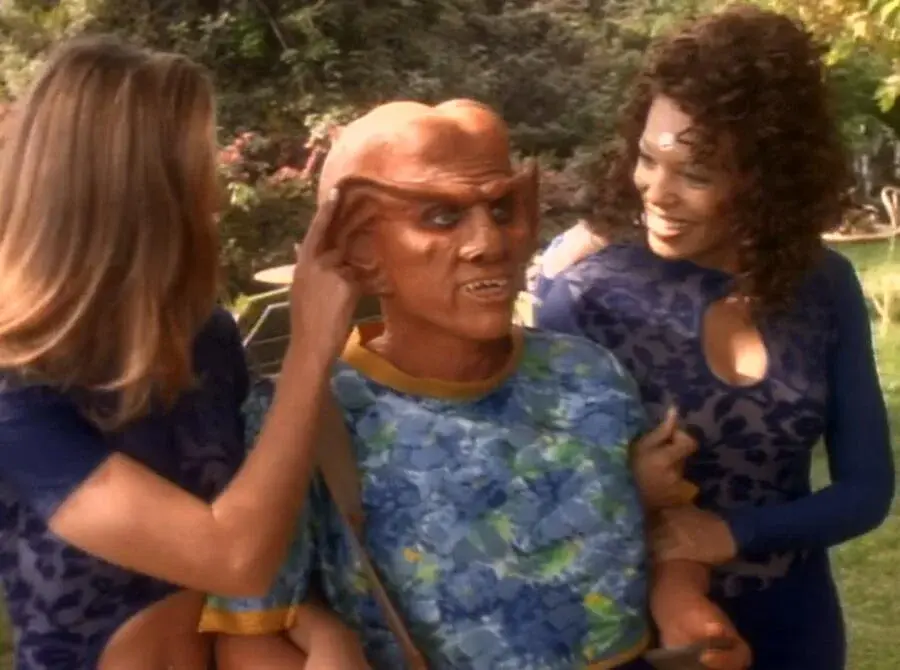Fuckin magnets
How do they work?
Tide comes in, tide comes out, You can’t explain that.
The dumber a civilization is, the more sense God makes.
This pretty accurately describes conservatives.
For those that don’t know: Bill O’Reilly Doesn’t Understand How Tides Work
Brah just discovered conservation of angular momentum
It’s not that. Gyroscopic action exists of course, but it’s fairly weak against the weight of your body. Balancing a bicycle is just like balancing an umbrella on your finger, except you can easily move your finger any direction you need. To move the bicycle sideways, you need to already be moving forward.
Track stands! Not a contradiction to your statement at all though: you need to be moving just ever so slightly.
With a fixie it’s easy, because you can pedal forwards and backwards in tiny amounts. With a freewheel, it’s trickier but you get the hang of it with practice. Ideally you’ll have an incline, so you pedal forward to go forward, and ease up to slide back. After some practice I can use the raised reflective paint from e.g. crosswalks as the “incline.” This miniscule motion is enough to balance — and like you said, it ain’t the angular momentum that does it.
it really is that though, have you not done the rotating wheel experiment? it is fucking hard to tilt the axis of a wheel rotating at a speed which is comparable to biking speed.come to think of it maybe not:
Which is just regular conservation of momentum plus a force directing it towards some center point it oscillates around, which feels weird because you can hold a lot more of it in your hands than you normally can without that oscillation.
first, and less importantly, your wheels are gyroscopes
second, and much more importantly, at speed you use your steering to compensate for imbalance. You lean a little right? slight steering to the right compensates. When standing still, steering is no longer an option (duh)
i tought the gyroscope theory had already been debunked?
It has as the sole cause. But when you have a couple big spinny bits, there is going to be some gyroscopic effect, and it does help keep it upright. It just can’t on its own, it provides a small assist.
Actually, the gyroscopic effect (specifically precession) has more to do with making the steering go the right way than keeping the bike upright directly.
It’s the central pedal force
my bike doesn’t have a central pedal. how does it stay up right?
Aliens.
Magnets
Magnetic aliens
Does it have a central fugue? Classical physics teachers don’t want to talk about that but if you look back to the Baroque interpretation it was all the rage.
Can confirm. Last week, I got home from a ride, stopped in front of the garage, couldn’t unclip, and promptly fell over. It turned out one of the bolts fell out from the cleat during the ride, so the cleat just rotated, instead of unclipping. D’oh. Fortunately, I mostly landed in grass, though I did scrape my ankle a bit.
Yeah, I can relate to this…
Over engineering problem
How so?
Cleats are a solution in search of a problem. Nothing changes if you remove them.
Tell me you’ve never cycled seriously without telling me you’ve never cycled seriously.
I commute 14km to work every other day and can confirm there is no difference.
Although placebos have been confirmed to help even though you know you are using a placebo so ¯_(ツ)_/¯
Riding in a road race or crit, or even a time trial, is very different from a commute ride.
But even on commutes it’s really good, depending on how often you expect to be stopping at lights. It’s great in rainy weather where my flats often slip off the pedal, or climbing up the many hills on my commute that necessitate getting out of the saddle.
Edit: also, you backslashed one of the underscores, which is great, but forgot to escape the backslash itself.
The idea behind clips is that you can pull up on the rising pedal instead of just following momentum from the other foot pushing down. It does work, but isn’t really necessary for commuter biking.
I got a used bike that had a hybrid pedal with a clip on one side and flats on the other. While the clip (heavy) side usually landed down, it didn’t always and it was weird to pedal with it. I just ride around on my bike, so I replaced them with cheap flat pedals and it’s fine. I also converted it to an e-bike, and I don’t need the extra pedal power.
There’s a huge difference, because I occasionally ride other bikes without them. My feet slip off the pedals without the cleats. I wouldn’t ride seriously without them.
I’ve been riding for 20+ years and never had this issue. I’ve tried cleats. Tried it for a year before I eventually switched back to a good set of pedals + a good set of shoes. Admittedly about half of my riding is mountain biking though, so that might be part of my bias.
Same principle as a gyroscope: a turning wheel will tend to stay perpendicular or parallel to the direction of the gravity vector because if it starts tilting away from such orientation there’s a force that pushes it back.
Also works better with bigger wheels (if I remember it correctly the effect is related to spinning momentum).
I was pretty surprised when learning Physics and they show us how to derive the formula for that (which I totally forgot since that was over 3 decades ago).
Edit: Actually the gyroscopic effetc is just a part of it. See this article
Actually, it’s the bike’s geometry rather than a gyroscopic effect. Try rolling a bike backwards rather than forward - it’ll topple quickly
Yeah, you’re mostly right: Why bycicles stay upright.
There’s some gyroscopic effect, but per that article it’s not the main reason.
Yep. And it is an easy one to test. Just immobilize the bike’s steering and see how well you can get it to balance.
Freestyle BMX riders go in reverse all the time and they don’t fall over.
A BMX bike without a rider will roll along happily. We called it “ghost riding” when I was a kid.
Gyroscopic effect is not even significant. Lock your steering and you will fall over no matter how fast your wheels are spinning. (Which can happen with a badly pitted headset)
Having the pivot point (steering) for the front wheel behind it’s axle helps
Yes there are demonstrations on YouTube of bikes just wanting to remain upright. You can role it down a hill and it will self correct. Something to do with physics but I forget the terms.
But pedaling on a treadmill make you fall over.
What the hell?
They’re called rollers, and they’re pretty easy to ride on.
I have heard that it is VERY hard to get started and then very quickly becomes thoughtlessly easy
I wouldn’t say easy… But yeah, you don’t just fall over.
Is it possible for the bike to fall off the rollers, sending everything crashing into the nearest wall?
No, if you fall off the rollers, your wheels just stop. Bicycle wheels don’t have anywhere near enough mass for their momentum alone to move your body.
Does it? I bet some weirdo on YouTube has done this.
you’re absolutely right. I searched it before making that comment and there’s one random dude who did exactly that, he even wondered himself if anyone has ever done that.
And pedaling in space makes you balance!
How the hell?
No, you’d start spinning
I’m surprised how much I’m seeing gyro brought up in these comments. It’s a factor, but it’s practically negligible. It’s all in the steering. Start to tip right, and you’ll subconsciously steer slightly to the right to correct your balance. Try to ride as slow as you can and you’ll find yourself doing these corrections much more frantically and dramatically. The reason for that is because it takes longer for the wheel to roll under your center gravity and “catch” you when you’re going slowly so you have to turn in quicker to maintain balance.
Notice that on almost every bike you see, the front axle on the bike is slightly ahead of the neck’s axis of rotation. That offset does two things: 1. It stabilizes the steering so that the bike will tend to steer straight and 2. (more important to my point) It makes the balance-correcting effect of steering more immediate and dramatic, making it much easier to ride at slower speeds.
As a counter argument showing why gyro is barely a factor, these exist:

Edit: if you’re not seeing the image like I’m not, Google “ski bike”.
It’s pretty common to bring up gyroscopes for this when people know a little bit about physics. It’s all over motorcycle forums, for instance.
As you say, it doesn’t work. Experiments have been done where they attach a counter rotating wheel to cancel out the gyroscopic effect, and while it’s a little wonky to ride, it works fine.
IIRC, we’re not 100% sure how bikes work just yet. Every time somebody comes up with a model that seems to be good, someone finds a counterexample that throws it in the bin. Even your explanation of bike trail isn’t all the way there; Razer-type scooters still work without trail on the front wheel.
I figured it was pretty obviously the rider that’s making the bike not fall over, not the bike itself.
If the bike’s ability to remain upright while moving was a natural feature, then why would you ever need to learn how to ride bikes? You could just sit on it and go if that was the case.
It works on its own. If you push your bike along with a good run and then let go, it’ll stay upright until it slows down too much.
Learning to ride a bike is mostly about being confident enough to let the bike work itself out. It gets more stable as it goes faster, but it’s natural to be afraid to go faster when it already feels unstable at low speed. Then there’s a little bit to learn about countersteering, but most people figure that out without being told it’s even a thing.
Yeah. Case in point: Ghost riders in Motorcycle racing.
Motorcycles also tend to fall down when stationary, yet stay upright without the rider at speed.
Also makes me wonder if just the bike crossing the finish line would be enough to win if you fell off in first place just before the line.
Then why does going faster also make it easier to balance on something without steering, like a snowboard?
My assumption is that when you’re standing still relative to the ground you can fall in many directions, but once you start moving momentum limits the directions you can fall to the ones in line with your motion. So the faster you’re moving the fewer directions you need to worry about.
Snowboards definitely have steering, you twist the board and shift your weight to manipulate how the edges contact the snow, it’s just not quiet as explicit as a bikes front wheel. But whether it’s a bike, a board, or literally any moving thing on land, the steering happens because you applied a lateral force to the ground and an equal and opposite force was applied back to you.
The snowboard uses different methods of applying that force, but other than that it’s the same concept as described in my first comment: Greater speed allows more subtle corrections to take effect more quickly.
Now the snowboard does have a wider contact area with the ground, but that really only helps you on flat ground at very low speed, or standstill. Advanced boarders will carve transitioning from edge to edge most of the time.
deleted by creator
A Veritasium video about the topic, if someone is actually interested: https://youtu.be/9cNmUNHSBac
Wait til anon hears about launch loops or space elevators
How long does it take to go up the space elevator?
What floor are you getting off at?
Not getting off in an elevator, that would be gross.
Hey, it’s okay if you can’t finish, that’s normal.
B-16
About tree fiddy then
Dynamic stability
I don’t get it when people (usually chavs) can just sit back with their hands in their pockets - when I try it my handlebars twist out to one side instantly.
deleted by creator
Most bikes are stable and a cyclist can weight shift to turn gently without touching the handlebars
Mine is a recumbent that steers with long handlebars. The handlebars prevent the bike from balancing itself.
Yours might have barely stable geometry, or badly placed weight on the handlebars
What’s really hard is getting a 5 year old to understand this before you run out of energy from trying to hold their seat and run at the same time.
That’s how I learned it. My dad got tired, let go and stopped.
I noticed it was suddenly much easier to pedal, so I turned around to see him standing 30ft behind me, then I crashed.This is the way.
Getting my 5yo to accept that he can peddle and balance by himself; takes longer than the ability. He used to crash once he realized I had stopped balancing him, sometimes it would take a minute or more.
It’s a lot easier if you get a balance bike first. They’ll naturally try coasting because that’s fun, so all they need to figure out is pedaling to move on to a real bike.
I did that with two kids, and it worked well both times.
My kid screams “un-let go” at me while balancing perfectly well. She understands, she does not accept.
If you’ve forgotten high school physics (like me), this is a legitimately strange phenomenon.














